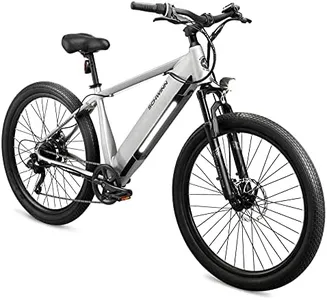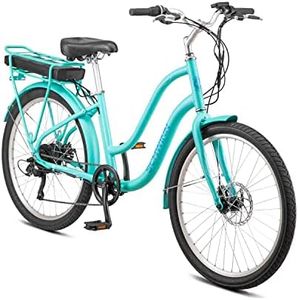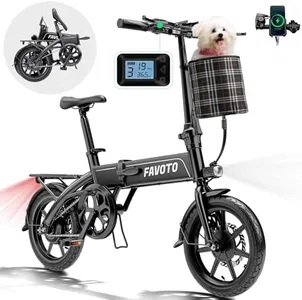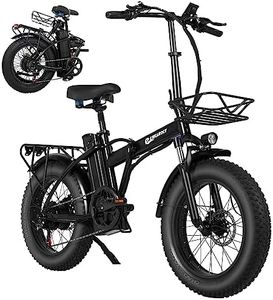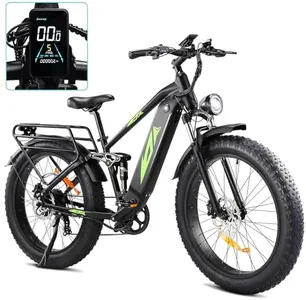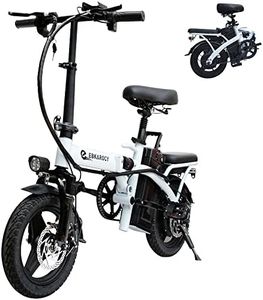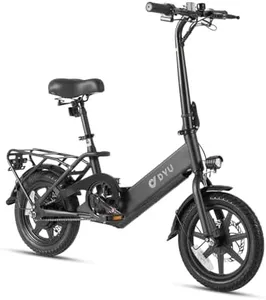2 Best Schwinn E Bikes 2025 in the United States
Our technology thoroughly searches through the online shopping world, reviewing hundreds of sites. We then process and analyze this information, updating in real-time to bring you the latest top-rated products. This way, you always get the best and most current options available.

Our Top Picks
Winner
Schwinn Marshall Electric Hybrid Bike for Adults, Small/Medium Step-Over Aluminum Frame, 250W Motor, 7 Speed, 27.5-Inch Wheels, Matte Grey
Most important from
108 reviews
The Schwinn Marshall Electric Hybrid Bike is a solid choice for adults looking for a versatile e-bike that can handle daily commutes, recreational rides, and light trails. With a 250W hub-drive motor, it offers a smooth and quiet assistance, allowing you to reach speeds up to 20 mph. The integrated 288-watt battery has a decent range, lasting up to 35 miles on a single charge, which is great for most short-distance travel needs. Riders between 5'8" and 6'4" will find the 18-inch aluminum step-over frame comfortable and easy to mount.
One of the bike's strong points is its 7-speed twist shifter, making it easy to adapt to different terrains. The mechanical disc brakes ensure reliable stopping power in various weather conditions, while the lightweight aluminum frame contributes to a manageable weight of around 52.8 pounds, which is important for portability.
There are some drawbacks to consider. The battery weight adds to the heft of the bike, which might be cumbersome for some users, especially when maneuvering or lifting. Additionally, while the range is sufficient for short rides, it may not be ideal for longer trips without recharging. The maximum weight capacity of 245 pounds could also be limiting for some riders. The integrated LED lights are a nice touch for safety during low-light conditions, enhancing visibility. However, assembly is required upon purchase, which could be a concern for those who prefer a ready-to-ride experience.
Most important from
108 reviews
Schwinn Mendocino Electric Cruiser Bike for Adults, 20MPH eBike, Up to 35-55 Miles on a Single Charge, 26-Inch Wheels, 6-Speed, Pedal Assist with Throttle, Mint Green
Most important from
104 reviews
The Schwinn Mendocino Electric Cruiser Bike is designed for adults looking for a comfortable and efficient riding experience. It features a lightweight aluminum frame and 26-inch wheels, making it easy to maneuver. The bike can reach speeds of up to 20 MPH thanks to its 250-watt motor, providing a good balance of power and speed suitable for casual rides or commutes. The battery life is commendable, offering a range of 35 to 55 miles on a single charge, which is ideal for daily use or leisurely outings, and it recharges in about 4 hours, adding convenience for users.
Its 6-speed drivetrain allows for smooth gear changes, which is a plus for adjusting to varying terrains. The mechanical disc brakes provide reliable stopping power, enhancing safety during rides. The bike's upright riding position promotes comfort, and features like fenders help keep you clean on wet roads. Additionally, the rear rack adds practicality, allowing for cargo transport.
There are a few drawbacks. The bike has a rigid suspension, which may not absorb bumps as well as a model with a more advanced suspension system, potentially leading to a rougher ride on uneven surfaces. Also, while the bike is rated for riders up to 300 pounds, heavier riders might find it less stable at higher speeds. The Mendocino targets beginner to intermediate riders, so more experienced cyclists might find it lacking in advanced features. Lastly, with a weight of 51.7 pounds, it's on the heavier side for an e-bike, which might make it cumbersome for some users to lift or transport.
Most important from
104 reviews
Buying Guide for the Best Schwinn E Bikes
Choosing the right Schwinn e-bike can be a rewarding experience if you know what to look for. E-bikes, or electric bikes, come with a variety of features and specifications that can greatly affect your riding experience. Understanding these key specs will help you make an informed decision that best suits your needs and preferences. Here are some important factors to consider when selecting a Schwinn e-bike.FAQ
Most Popular Categories Right Now
